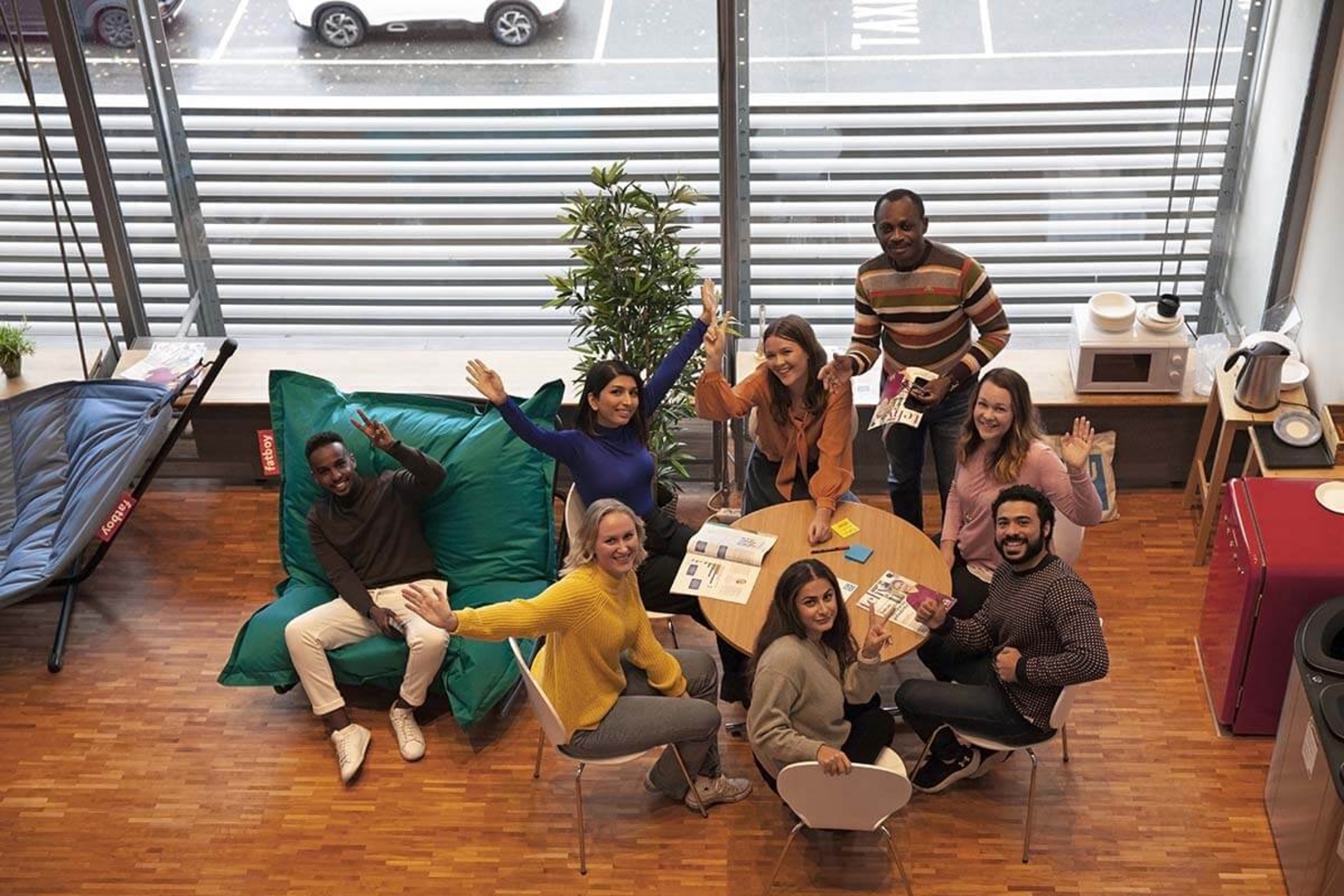An accessible educational institution is a place where everyone can study
An accessibility mapping was carried out on Laurea campuses.

The accessibility of built environments is determined by looking at how well diversity and different needs of people are taken into account in the facilities. Accessibility is not only about whether people who use mobility aids can arrive and move around in the facilities in an accessible manner. Accessible facilities also take into account issues related to things like vision and hearing.
A mapping that examined accessibility on all six Laurea campuses was completed at the beginning of this year. Primary accessibility information was extracted from the mapping reports. The accessibility information for each campus as well as related contact information can now be found on Laurea's website.
The mapping was carried out by Riesa Consultative Co, a company that focuses on the promotion of accessibility and equality. In addition to accessibility mappings, Riesa also offers advice to its clients on how to make environments, operations and communications more accessible.
- The idea of Riesa was born from frustration; the world is not as accessible as it could be. We believe that accessibility can be promoted with both big and small things, explain the founders of Riesa, Atso Ahonen and Joel Hentunen, who started their operations in 2018.
The mapping concerned the life of students on the campuses as a whole
The mapping at Laurea examined the current state of accessibility, with a focus on the facilities and services that have a central role in the life of students. Experts from Riesa familiarised themselves with the facilities of each campus, photographed and measured them, and assessed how well accessibility was realised in them.
- When we think about an educational institution, it is important to examine the entire path that students go through. What students do in the facilities, how they move and what kind of services they need in addition to the learning facilities, says Atso Ahonen, who also graduated from Laurea in 2015.
From all this information, we get an overall picture; which areas of accessibility are realised well on each campus, which areas should be improved and what development measures could be taken to improve accessibility. When suggesting development measures, Riesa experts emphasise that some of the issues are small and easy to fix, while others require more longer-term planning.
- Small changes can amount to significant improvements. Examples include sufficiently clear signs in the facilities and appropriate lighting for different kinds of spaces. Controlling lights with motion sensors can make group work areas and meeting rooms much easier to use, especially when compared to rooms where the light switch is in a difficult place, Joel Hentunen explains.
Mapping supports the improvement of accessibility in the campuses
Laurea’s campuses are all different from each other both in terms of age and building design. Elina Flemming, Director of Campus Development at Laurea, says that the design trends of the different time periods can be seen in the built environment of the campuses. The oldest sites have also been subject to extensions and renovations. The resulting environment can seem difficult to traverse and navigate.
- Naturally, we cannot rebuild everything, but smaller measures can also make a big difference, and many such measures have now been identified. These suggestions allow us to make a very concrete development plan for improving accessibility, Flemming explains.
- We can also be quite pleased about the mapping results, since they show us that accessibility is already on at least a moderate level in each campus.
Making campuses easily accessible to everyone
According to the Riesa experts, a good educational institution must promote accessibility by considering the needs of the mobility, vision and hearing environments. Accessibility in the visual environment includes, for example, properly placed signs that have a good contrast. To enable an accessible hearing environment, the facilities should have sound transfer systems, such as induction loops, in at least some of the classrooms.
- In terms of the mobility environment, it is important to ensure that accessing classrooms and moving around on campus is smooth and easy. The premise of our mapping and our solution proposals is that everyone should be able to use the campus independently and in an accessible manner, Joel Hentunen explains.
Ensuring an accessible learning environment is something that every campus user can also contribute to.
- Having an open mind and accepting diversity are important starting points for all users of the facilities. It is also important that, for example, every person who uses the Kampusparkki facilities keeps an unobstructed access open to the refrigerator, microwave and other parts of the facilities, explain the experts from Riesa.
Accessibility information for each Laurea campus